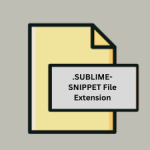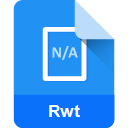.ELP File Extension

eCommerce Landing Page
| Developer | Synthrone |
| Popularity | |
| Category | Page Layout Files |
| Format | .ELP |
| Cross Platform | Update Soon |
What is an ELP file?
The .ELP file extension is associated with eCommerce Landing Pages, crucial components of digital marketing strategies.
These files are designed to capture visitor attention, promote products or services, and ultimately drive conversions on eCommerce platforms.
In this article, we delve into the origins, structure, conversion methods, advantages, disadvantages, and methods to open .ELP files across various operating systems.
More Information.
The concept of landing pages dates back to the early 2000s when online marketers recognized the need for targeted pages optimized for conversion. Initially, landing pages were simple HTML documents linked from digital ads or email campaigns.
Over time, with advancements in web technologies and eCommerce platforms, .ELP files evolved to integrate multimedia content, responsive design, and A/B testing capabilities to optimize conversion rates.
Origin Of This File.
eCommerce Landing Pages (.ELP) emerged with the rapid growth of online retail and digital marketing.
They serve as specialized web pages crafted to achieve specific marketing goals, such as promoting a product launch, collecting leads, or encouraging purchases.
These pages are meticulously designed with persuasive elements like compelling visuals, persuasive copy, and clear calls-to-action (CTAs) to guide visitors towards desired actions.
File Structure Technical Specification.
.ELP files typically comprise HTML, CSS, JavaScript, and media files (such as images and videos) embedded within the page structure.
They are designed to be lightweight yet impactful, ensuring fast load times and compatibility across various devices and browsers.
.ELP files often include tracking scripts or pixels to measure visitor behavior and conversion metrics, providing insights crucial for refining marketing strategies.
How to Convert the File?
Converting .ELP files often involve exporting or saving them in formats compatible with Content Management Systems (CMS) or email marketing platforms. Common conversion methods include:
- HTML Export: Save .ELP as HTML files for standalone use or integration with web servers.
- PDF Conversion: Convert .ELP to PDF format for easier distribution and offline viewing.
- CMS Integration: Import .ELP content into CMS platforms like WordPress or Shopify for seamless deployment.
Advantages And Disadvantages.
Advantages:
- Targeted Marketing: Tailored content and design catered to specific marketing campaigns.
- High Conversion Potential: Optimized layouts and CTAs enhance conversion rates.
- Measurable Results: Integration with analytics tools provides detailed performance metrics.
- Flexibility: Easily customizable to align with changing marketing objectives.
Disadvantages:
- Development Complexity: Requires technical expertise in web design and optimization.
- Maintenance Needs: Regular updates and testing are necessary to ensure optimal performance.
- Compatibility Issues: Ensuring consistent display across different browsers and devices can be challenging.
- Costs: Initial setup and ongoing optimization may incur significant expenses.
How to Open ELP?
Open In Windows
Web Browser:
- Use any modern web browser such as Google Chrome, Mozilla Firefox, or Microsoft Edge.
- Simply double-click the .ELP file, and it should open in your default browser.
Text Editor:
- If you want to view or edit the HTML code of the .ELP file, uses text editors like Notepad++ or Visual Studio Code.
- Right-click the .ELP file, select “Open with,” and choose your preferred text editor.
Open In Linux
Web Browser:
- Similar to Windows, use web browsers like Firefox or Chrome.
- Navigate to the location of the .ELP file and double-click it to open in your default browser.
Text Editor:
- To view or edit the HTML code, use text editors such as Gedit or Visual Studio Code in Linux.
- Right-click the .ELP file, select “Open with,” and choose the text editor you prefer.
Open In MAC
Safari:
- macOS comes with Safari as the default web browser.
- Double-click the .ELP file, and it should open in Safari.
Chrome or Firefox:
- If you prefer using Chrome or Firefox on macOS, simply open these browsers and navigate to the .ELP file location.
Open In Android
Chrome Browser:
- Android devices commonly use Google Chrome as the default browser.
- Download the .ELP file to your device, open Chrome, navigate to the file location, and tap on it to open.
File Manager Apps:
- If you have a file manager app installed, you can locate the .ELP file and tap on it to open. It will likely open in the default browser or prompt you to choose a browser.
Open In IOS
Safari:
- iOS devices use Safari as the default web browser.
- Download the .ELP file to your device, open Safari, navigate to the file location (via Files app or browser), and tap on it to open.
Third-Party Apps:
- Some third-party apps on iOS may allow you to manage and open .ELP files, similar to file manager functionalities on Android.













